The Japanese are no strangers to weird and wacky cinema, in fact, as most YouTube commenters are quick to attest , “OMG JAPANESE MOVIES ARE SO WEIRD!!!1” A host of cultural differences and an inclination towards the subversive tends to make many Japanese movies come across as strange and impenetrable to a Western audience—and then there are Noboru Iguchi movies. Directors like Iguchi go above and beyond the normal levels of weird to give viewers something truly, truly bizarre.
The Why of Weird
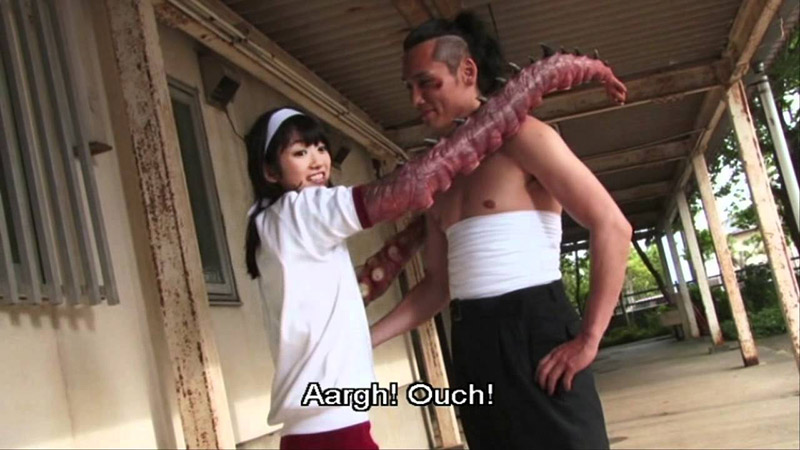
A popular social theory that many have used to explain wackiness in Japanese media is that Japan’s polite and often rigid society constricts so much that, in the areas where people get to take a break from the formality and let loose, like movies and television, they REALLY let loose. This seems to ring true with Iguchi, because his films incorporate very traditionally Japanese elements meshed with a vulgar and comedic mix of over-the-top visuals, a smattering of somewhat-deviant sexuality, and a heaping helping of violence and gore.
When Noboru Iguchi was asked in an interview with Twitch if there was a limit to the amount of blood and violence he was comfortable with putting in a movie, he had only one response: “not really.” This is indicative of the types of movies Iguchi wants to make. His personal philosophy stems from an idea that going to the movies should be a spectacle. He makes sure to pack his films to the brim with images that will entertain, confuse, and shock his audience. In another Twitch interview he stated some of his inspirations, “I was influenced by the ghost houses or freak shows at Japanese play lands. I was easily scared but loved those facilities since I was a little child. I always think a movie should [be] like that, as an entertaining tool. My policy of making movies is to surprise and entertain the people at the same time.”
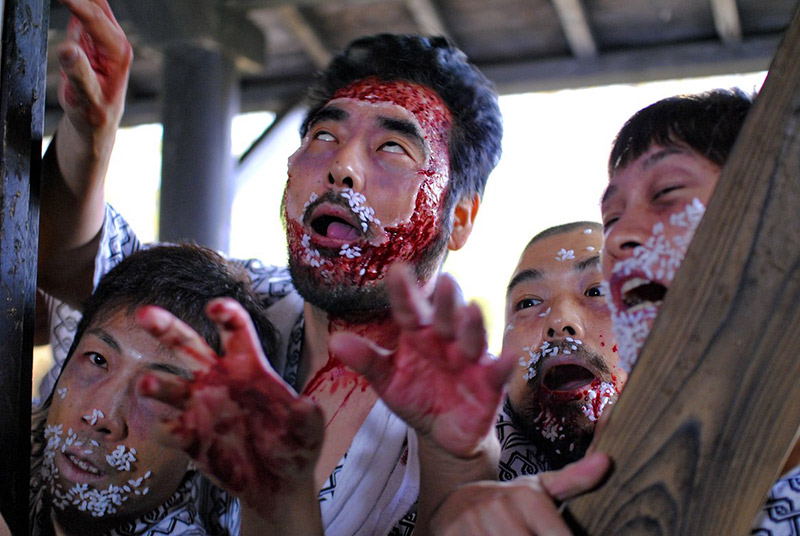
Iguchi has had definite success creating the atmosphere of a freak show or a haunted house in his movies as they are often disturbing, yet strangely endearing. His films stem from a darker side of Japanese action and horror movies that were already hyperviolent. However, Iguchi’s innovation in his own words was that, even though, “very bloody films already existed, what was new about [our movies] was that we merged the gore with a funny action film, and we took it further from there in our later films.”
Not surprisingly considering the overt sexual content of many of his films, Iguchi got his cinematic start in the world of Japanese Adult Video. He was even given the 2005 Best Rental Video award for some of his work with a title I’d rather not drop in polite company.
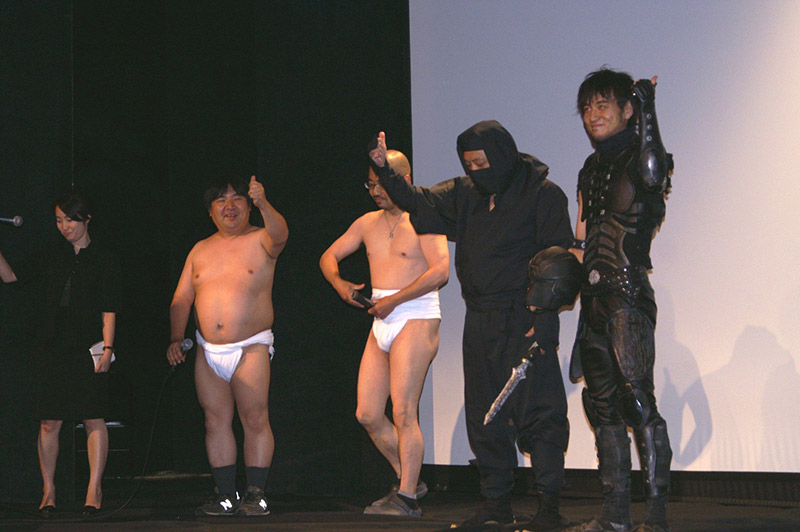
During this time he worked on some rather fringe adult films, one of which featured a robotic girl with guns for breasts, and that’s when Iguchi met long-time co-conspirator and special effects make-up artist Yoshihiro Nishimura. The two of them have worked together on many films since and Nishimura even has had promising solo directorial releases, like “Tokyo Gore Police”.
The Insanity Sampler
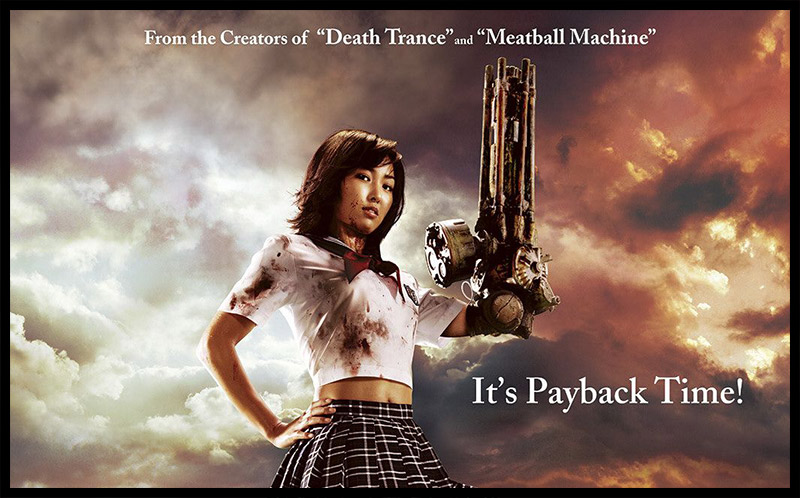
Iguchi’s mainstream filmography (although mainstream might be overselling it) is a strange and diverse catalog, starting with “Machine Girl”, which incorporates elements and stars from his adult video past.
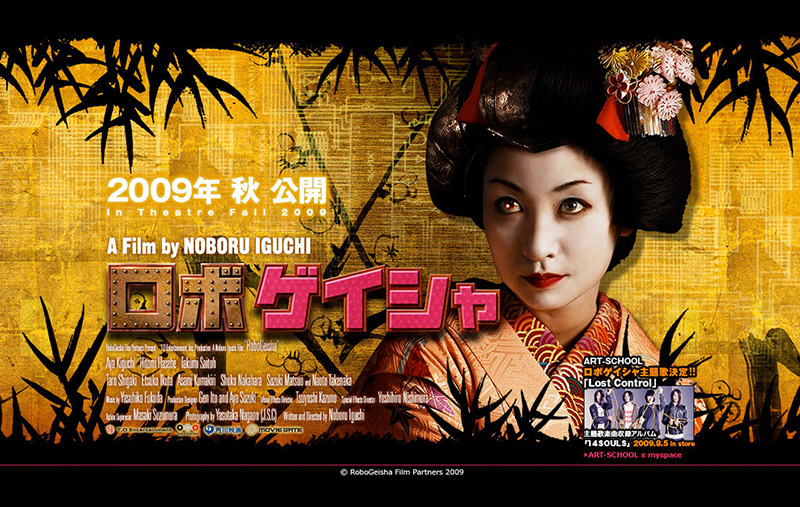
“Robo Geisha”, another evolution of Machine Girl’s premise, is a movie that I thought was entirely sure was fake when I first saw the trailer. I remember thinking, “no one would actually make this.” It was an international hit at film festivals and put Noboru Iguchi’s name on the alternative film map. The overseas success, Iguchi said, was due in part because, “things like ninja and geisha are actually not that popular in Japan. It’s mostly foreigners who really go for that.”

The delightfully demented and parodical “Mutant Girl Squad.” is number one for sheer entertainment value. I don’t think I can recommend this one enough.
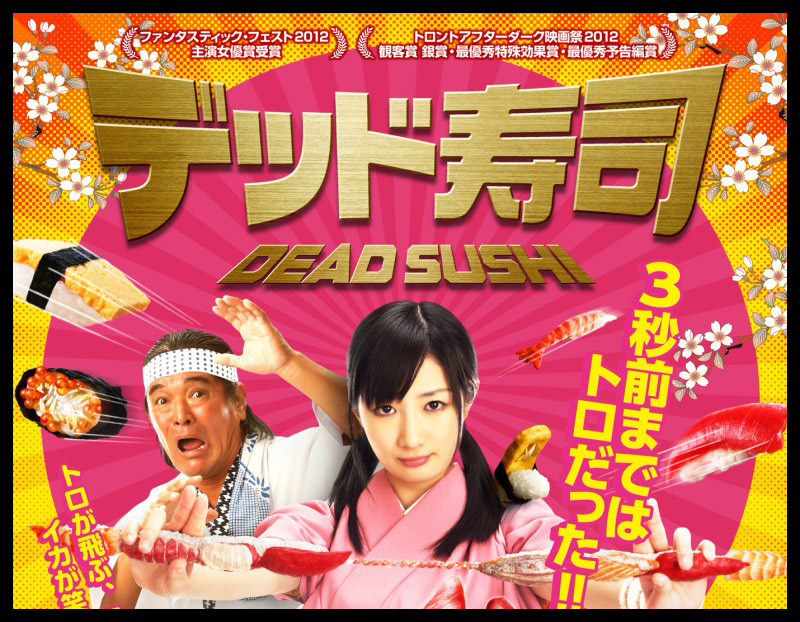
The uproarious “Dead Sushi” features some truly bizarre scenes with evil flying sushi, rice zombies, fish monsters, and a completely unexpected amount of scantily clad women.
And these are just a few of his most well-known movies. He has also made forays into pure horror with “Kaidan Shin Mimibukuro Igyo”, the 9th installment in the Tomie series, “Tomie Unlimited”, as well as more conventional action films for wider audiences, such as “Karate Robo Zaborgar”, his highest budgeted film to date. Iguchi is never content to stay in one place, always tries to show his signature style in as many ways as possible, and doesn’t show any sign of slowing down. He has said: “I’d love to make very different kinds of films, from different genres. I want to try everything at least once. Actually I am a big fan of the Farrelly brothers and would really like to try making their kind of movie.” It’s hard to tell what else we will see from Iguchi over the years. Every time he announces a movie, it is a new surprise.
A Hidden Depth
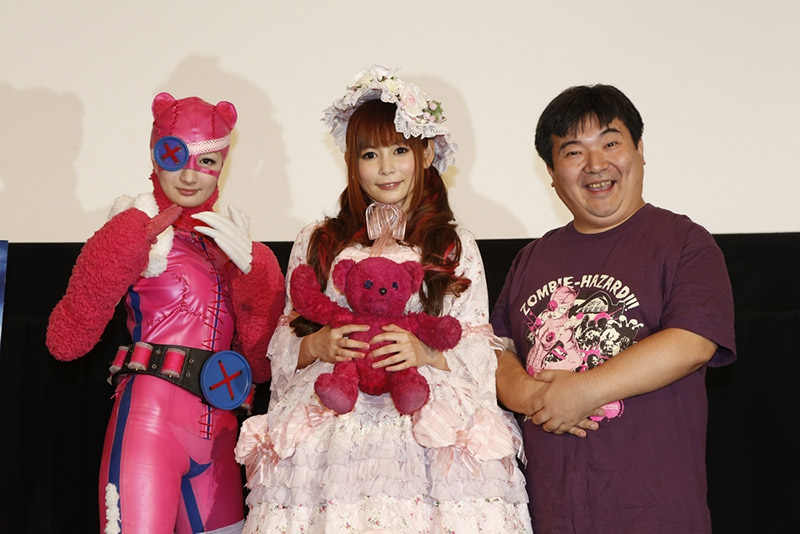
It’s important to note that, despite the nature of most of his films, cinematically and thematically Iguchi is no slouch. His movies often retain an emotional core and a strong use of allegory even though the delivery method is typically wacky and unconventional. For example, “The ABCs of Death” is a film in which 26 different directors picked a letter of the alphabet and created a short film centered around death and their chosen letter. Iguchi’s piece entitled, of course, “F is for Fart” (considering his past and his other ‘F’ options, I like to think he was showing some restraint) is ostensibly about death by farting. But Iguchi has stated in interviews that a little more thought goes into it than just the juvenile surface level:
“Even though the theme this time was ‘death,’ I wanted to make a movie where no blood was spilled. I set out from the start to create a story about death that didn’t involve the kind of splatter I’d shown in films up to now. Instead, I wanted to draw a lyrical portrait of young girls who are fated to die. Because I tried to include some humor and some fetishistic aspects, it turned pretty substantially into a comedy. And because I also wanted to include the themes of the earthquake in Japan, along with a radioactive gas leak, the ‘gas = fart’ equation came together pretty naturally from within my own interests. Surprisingly, while making the film, I also found myself conscious of young people’s feelings and the current state of affairs in society. At least in the way people think about death, that was the case. If you compare it to Machine Girl, I found myself thinking at that time about the bullying problem in Japanese society. During Karate Robo Zaborgar, it was the problem of unemployed people. I think I always want to bring various problems in modern society to bear upon the plot of what, at first glance, seems to be a totally different subject within a genre movie.”
Wow! There you have it. A lot more thought goes into Iguchi’s films than your average genre film. I mean, my five-year-old cousin already pitched me the basic concept for “F is for Fart” a few years back, but in practice Iguchi has attention to detail and themes that far exceeds his subject matter. If you’re the kind of viewer that can look beyond the on-screen antics, you may also be able to take away more than you’d imagine from these bizarre flicks.
If you haven’t seen any of Iguchi’s movies and you don’t mind a little bit of ultraviolence, a little bit of fanservice, and a LOT bit of over-the-top shenanigans, it might be time to give these a try. If he did his job right, you will be shocked AND entertained. And trust me, both the shock and entertainment comes in spades.
